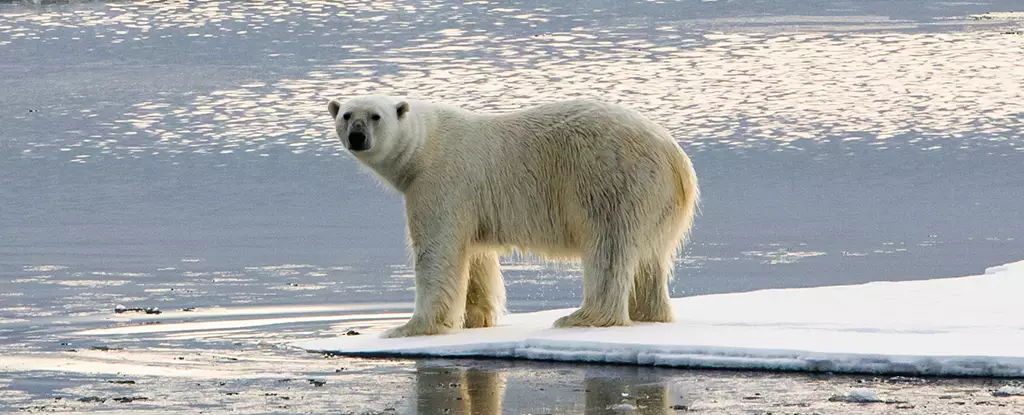The Arctic is an intricate tapestry of ecosystems, and within this frozen expanse lies the ‘Last Ice Area’ (LIA), projected to be the final refuge of perennial sea ice amidst a world grappling with escalating temperatures. This unique region is not only significant for its ecological diversity but also acts as a vital regulatory component of the planet’s climate system. However, a recent study led by researchers at McGill University has cast a shadow of urgency over this fragile landscape, revealing that the retreat of the LIA is expected to occur at a much accelerated pace than previously thought.
The researchers utilized cutting-edge tools, specifically the Community Earth System Model, which offers a more granular examination of sea ice dynamics. Unlike earlier simulations, this model incorporates the complexities of sea currents and ice flow, presenting a more nuanced understanding of the processes that contribute to ice disappearance. According to Bruno Tremblay, an atmospheric scientist involved in the study, the high-resolution models illustrate that the pathways through the Canadian Arctic Archipelago will hasten the melting process of the LIA. This revelation challenges long-held assumptions about the longevity of Arctic ice, putting the region’s future in jeopardy.
With projections indicating that the central Arctic Ocean could become seasonally ice-free by as early as 2035, the timelines for the LIA’s permanent ice may diminish by a staggering six to 24 years post the establishment of these seasonal patterns. This shift underscores the immediate need for a reevaluation of climate projections concerning the Arctic.
The loss of sea ice has dire consequences for polar ecosystems. The LIA serves as a crucial habitat for a variety of species, notably polar bears and seals, with nearly a quarter of the world’s polar bear population inhabiting this region. The decline of this ice habitat is not merely a statistic; it translates into life-or-death scenarios for wildlife caught in the relentless grip of climate change. The impact has been visually poignant, highlighted in documentaries such as “Our Planet,” where walruses are depicted perilously attempting to scale cliffs due to the loss of their ice habitat.
The decline of ice can also lead to a ripple effect through the food web, affecting not only apex predators but also diverse marine life that depend on stable ice conditions. Furthermore, Indigenous communities who rely on these ecosystems for subsistence hunting face existential threats, as their traditional ways of life become increasingly untenable.
The importance of the LIA extends beyond biological thresholds; it is recognized as a crucial environmental frontier. In fact, part of this area has been designated as the Tuvaijuittuq Marine Protected Area by the Canadian government—a recognition of its ecological significance. The name itself, meaning “the place where the ice never melts” in Inuktut, suggests a profound connection between Indigenous culture and the natural rhythms of the Arctic environment.
Yet, with alarming projections regarding ice loss, there is a intensified call for immediate action against climate change. The research findings serve as a stark reminder of the precarious balance that governs the Arctic. Scientists like Madeleine Fol stress that understanding and mitigating warming trends is essential for the preservation of the LIA and its surrounding habitats.
The prospects of preserving the Last Ice Area hinge upon global collective actions that prioritize sustainable practices and climate policies. This region’s future is emblematic of the broader challenges posed by climate change—representing not just environmental degradation, but a potential loss of biodiversity and cultural heritage.
The warning signals are loud and clear. If the world fails to address the root causes of climate change decisively, the implications will be catastrophic—not solely for the Arctic but for our planet as a whole. The findings from McGill University highlight the pressing need for collaborative efforts to safeguard not just the LIA, but all ecosystems vulnerable to the specter of climate disruption. The time for meaningful action is now; the tapestry of life woven into the Arctic is at stake, and it needs our vigilance, respect, and prioritization for a hopeful future.


Leave a Reply